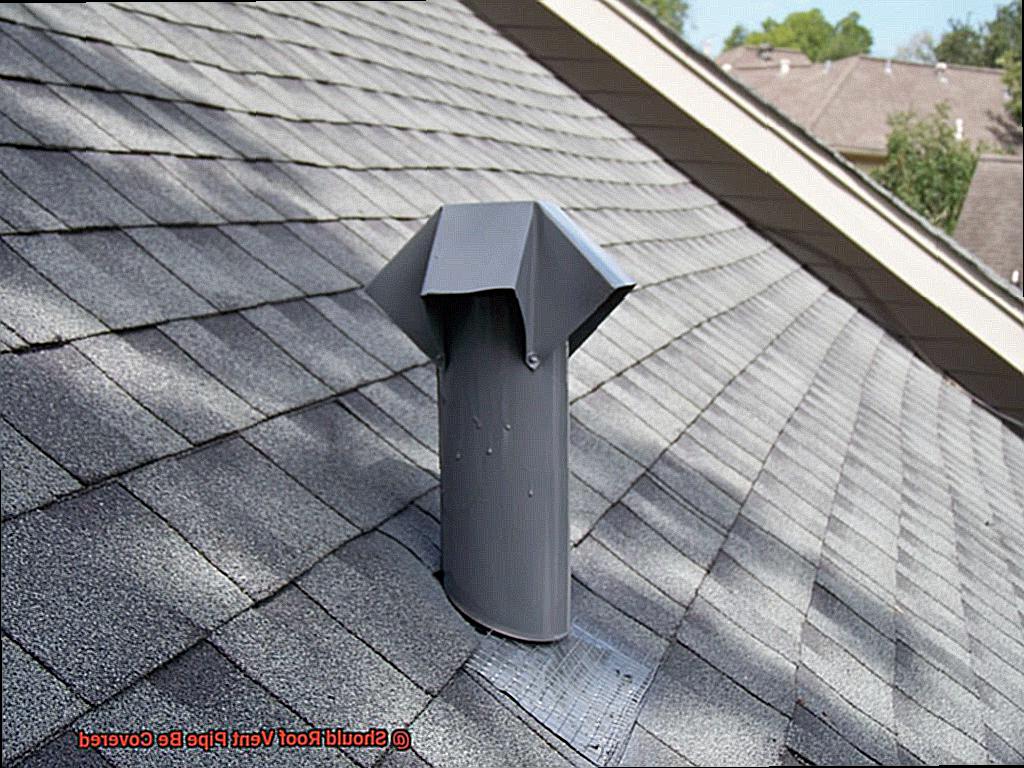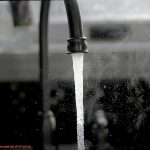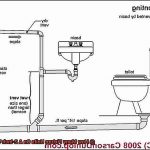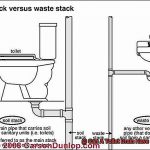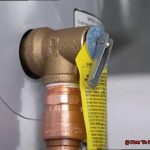Are you pondering whether to cover your roof vent pipe or not? It’s a question that doesn’t have a straight answer since there are varying opinions on the matter. While covering your roof vent pipe may seem like a wise choice, it’s essential to weigh the pros and cons before making a decision.
Roof vent pipes play an indispensable role in plumbing systems as they allow air to enter and exit your home’s drainage system. They are typically made of PVC or metal and sit exposed on your roof, providing easy ventilation. However, they can also be vulnerable to damage from environmental factors such as rain, snow, and extreme temperatures.
In this article, we’ll delve into whether or not you should cover your roof vent pipe and what factors come into play when making that decision. We’ll also provide expert tips on how to maintain your roof vent pipes to ensure optimal functionality.
So, whether you’re a homeowner or a professional roofer, keep reading to learn more about the advantages and disadvantages of covering your roof vent pipe.
Contents
What is a Roof Vent Pipe?
If you have a plumbing system in your house, you might have noticed a vertical pipe extending from the drainage pipes through your roof. That’s your roof vent pipe, also referred to as a plumbing vent or vent stack. It plays a crucial role in regulating the air pressure in the plumbing system, preventing sewer gases from entering the building, and allowing waste and wastewater to flow out of the building efficiently.
Without a roof vent pipe, your plumbing system would be prone to clogs and backups, leading to foul odors, unsanitary conditions, and potentially costly damage. So, it’s safe to say that this unassuming pipe is essential for maintaining a healthy and happy plumbing system.
However, some homeowners may consider covering their roof vent pipe to protect it from external factors like rainwater, debris, or pests. This is a mistake that can lead to more significant problems rather than solving them.
Covering a roof vent pipe can impede proper ventilation and cause pressure to build up in the plumbing system. This can lead to leaks or burst pipes and even cause unpleasant odors to build up in your home. Debris like leaves, sticks, or small animals can become trapped in the covered pipe and block the flow of air. This can result in an obstructed plumbing system and expensive repairs.
Covering a roof vent pipe can also create hazardous situations since sewer gases are toxic and flammable. If they are unable to escape through the vent pipe, they may enter the house and pose dangers to residents.
In conclusion, it is crucial not to cover a roof vent pipe. Homeowners should ensure that their roof vent pipes are free from obstruction and functioning correctly to maintain a safe and efficient plumbing system.
Why Covering a Roof Vent Pipe is Not Recommended
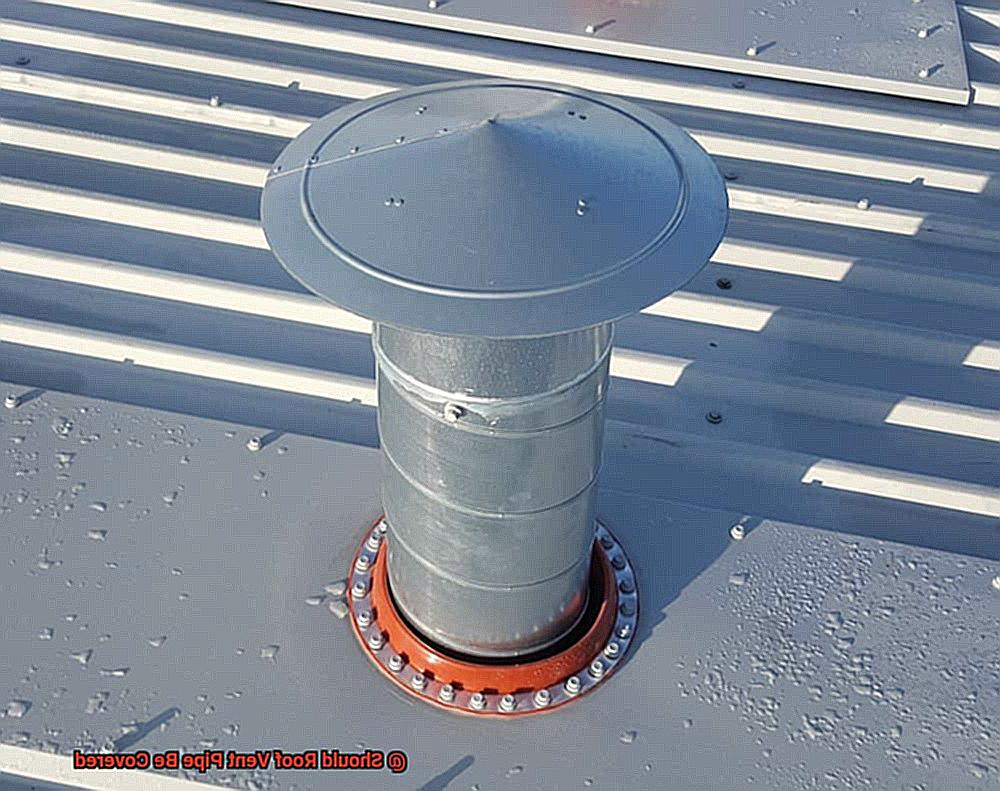
Or maybe you’re planning to redecorate and want to hide that unsightly pipe. Whatever your reason, as an expert in plumbing systems, I strongly advise against it. Here’s why:
Roof vent pipes are installed for a specific purpose – to allow air to escape from the plumbing system and prevent sewer gases from entering your home. When you cover the vent pipe, you disrupt this process and cause several issues.
The first problem that can arise from covering a roof vent pipe is the buildup of sewer gases within your home. These gases have nowhere to go and can accumulate inside your house, resulting in unpleasant odors and even health problems. Nobody wants to deal with that.
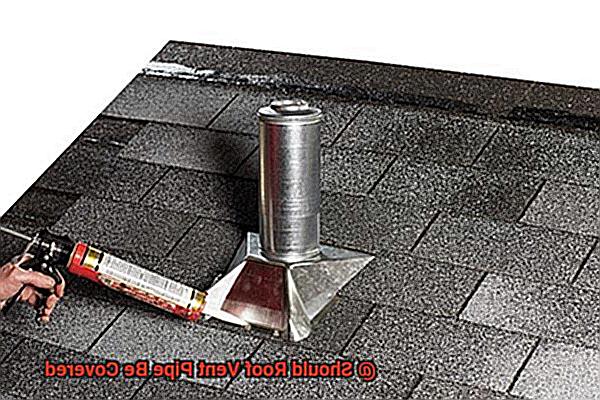
The second issue that can occur when the roof vent pipe is covered is reduced airflow within the plumbing system. This can lead to slow draining sinks, toilets, and showers as the water struggles to flow through the pipes. Over time, this can cause clogs and other plumbing problems that may require costly repairs – not something anyone wants to deal with.
It’s also worth noting that many building codes prohibit covering roof vent pipes for safety reasons. Covering the vent pipe can trap hot air within the plumbing system, increasing the risk of fires and other hazards. Safety should always be a top priority when it comes to your home.
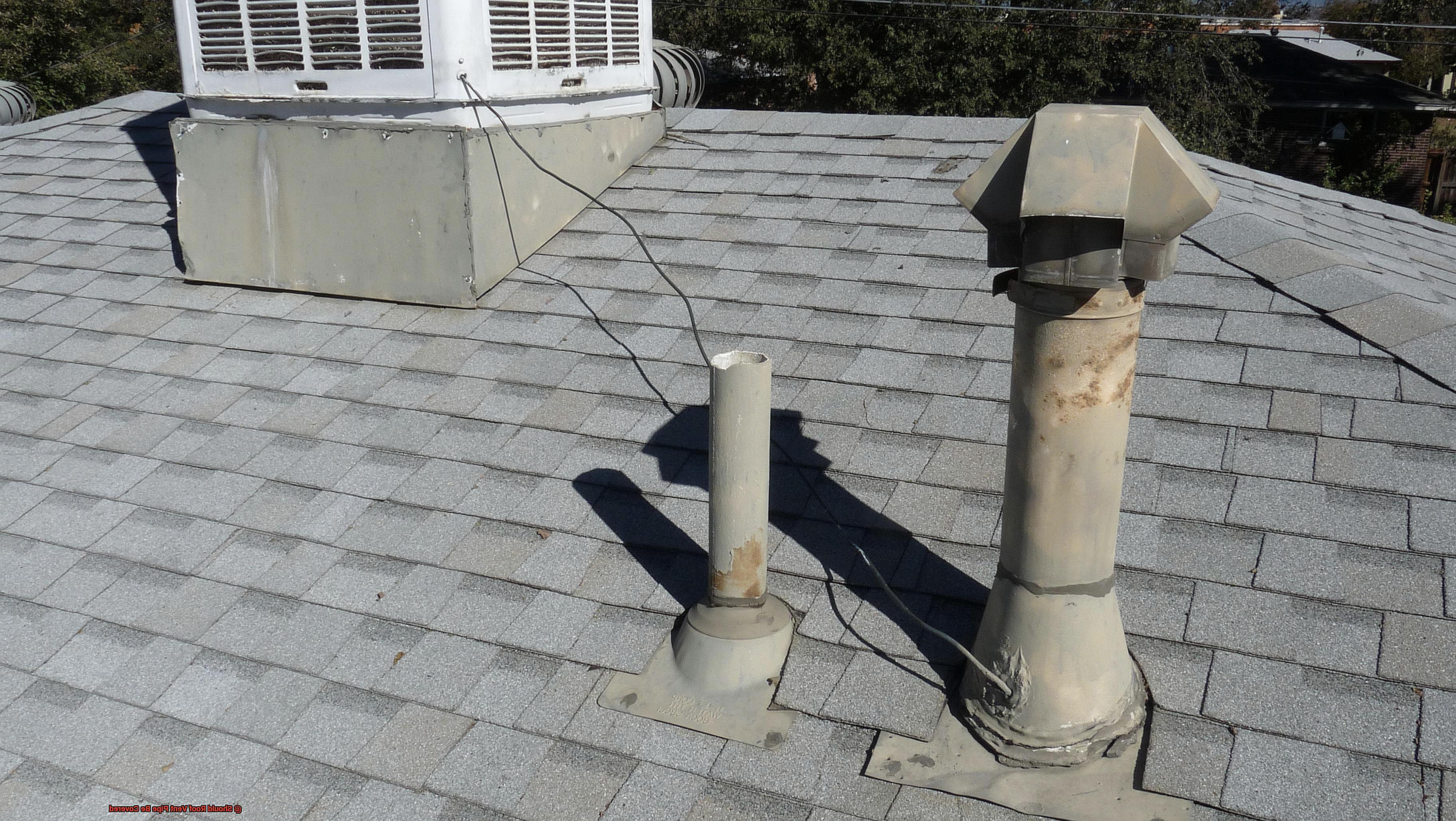
In summary, covering a roof vent pipe is not recommended due to the potential for sewer gas buildup, reduced airflow within the plumbing system, and safety concerns. If you suspect that your roof vent pipe may be covered or blocked, it’s important to have it inspected by a professional plumber to ensure that it’s functioning properly.
So, before you reach for that cover or try to hide that pipe, think twice and consult with a professional plumber.
Poor Ventilation Can Lead to Leaks and Burst Pipes
Poor ventilation is a common issue that can lead to significant problems with your roof vent pipes. As an expert in plumbing, I know that stagnant air inside the vent pipe can cause condensation to form, which over time can cause leaks and burst pipes. This can result in costly repairs and water damage to your home.
Covering the vent pipe is one solution to this problem. However, the type of vent pipe you have determines whether or not it should be covered. PVC vent pipes, for instance, must remain open to allow for proper airflow. Meanwhile, metal vent pipes can be covered as long as there is still some space for air to flow through.
It’s important to note that not all roof vent pipes should be covered. Some pipes require ventilation in order to function properly. If you’re unsure whether or not your vent pipe should be covered, it’s best to consult with a professional plumber or contractor.
Ignoring poor ventilation can result in serious damage to your plumbing system and home. To avoid such outcomes, it’s essential to address the issue promptly and make necessary changes as recommended by a professional.
In conclusion, proper ventilation is essential for maintaining the health of your roof vent pipes. If you suspect poor ventilation in your plumbing system, seek professional help immediately. Remember: prevention is always better than cure.
Clogging of the Roof Vent Pipe Can Result in Expensive Repairs
Not only can a clogged pipe lead to potentially hazardous health conditions, but it can also cause expensive damage to your plumbing system.
The roof vent pipe is a crucial component of your home’s plumbing system, regulating air pressure and preventing harmful gases from entering your living space. However, when the pipe becomes clogged, it can cause pressure imbalances in the system, leading to sewer gas backup and potential health hazards.
Sewer gas is a toxic mixture of gases, including methane, ammonia, and hydrogen sulfide. If it enters your living space, it can pose a serious threat to your health. Additionally, clogs in the plumbing system can cause water to back up into sinks, toilets, and other fixtures, leading to overflowing and damage to floors and walls.
To prevent costly repairs and potential health hazards, it’s essential to keep your roof vent pipe unclogged. Regular maintenance and cleaning of the pipe can help prevent debris buildup and keep the system functioning correctly. You can also install a cover over the roof vent pipe to prevent debris from entering and clogging the pipe. However, make sure any cover used allows for proper ventilation to maintain air pressure balance in the plumbing system.
Remember, prevention is always better than cure when it comes to clogging of the roof vent pipe. Don’t wait until you experience sewer gas backup or water damage before taking action. Seek professional help if you suspect your roof vent pipe may be clogged and take proactive steps to keep it clean and functional.
Hazardous Situations May Occur if the Roof Vent Pipe is Covered
Even though it may seem like a good idea to protect your roof vent pipe from debris and weather damage, doing so can lead to hazardous situations that can cause serious harm.
One of the most significant hazards of covering a roof vent pipe is the accumulation of sewer gas. This gas is dangerous as it contains chemicals such as methane, ammonia, and hydrogen sulfide that can be harmful or even deadly in high concentrations.
The vent pipe is designed to release sewer gas safely into the atmosphere, but if it’s covered, the gas can accumulate and become a health hazard. It’s crucial to ensure that the vent pipe is free and clear of any obstructions and not covered to avoid any dangerous situations.
Another significant hazard associated with covering a roof vent pipe is that it can cause blockages in the plumbing system. The vent pipe allows air to flow through the plumbing system, preventing clogs and backups. If the vent pipe is covered, there may not be enough airflow to prevent clogs from forming. This can lead to costly repairs and damage to your plumbing system.
In addition to these hazards, covering a roof vent pipe can also cause damage to your roofing material. If the cover isn’t installed correctly, it can create gaps or holes in the roof that can lead to leaks and water damage. It’s imperative that any cover installed on a roof vent pipe is properly sealed and secured to prevent any damage to your roofing material.
To avoid these hazards altogether, it’s best not to cover your roof vent pipe at all. Instead, ensure that your roof vent pipe is regularly maintained and functioning correctly.
Regular cleaning and proper installation of covers can prevent disasters from happening.
_PoycWM_m5A” >
Conclusion
In summary, it’s best to leave your roof vent pipe uncovered. While the urge to shield it from the elements is understandable, doing so can cause serious issues with your plumbing and even put you in harm’s way. The role of a roof vent pipe is critical in regulating air pressure within your plumbing system and preventing unpleasant odors from entering your home.
Covering the vent pipe may obstruct proper ventilation, leading to a buildup of pressure that could result in leaks or burst pipes. It could also cause harmful sewer gases to accumulate indoors, posing a health risk to you and your family.
It’s worth noting that not all roof vent pipes are created equal. Some require ventilation to function correctly, so homeowners must ensure that their pipes are unobstructed and functioning correctly for optimal safety and efficiency.
If you suspect that your roof vent pipe is blocked or covered, don’t hesitate to enlist the help of a professional plumber. Regular cleaning and maintenance can prevent debris buildup and keep your system functioning as it should.
Remember: prevention is key when it comes to clogged roof vent pipes. Don’t wait until disaster strikes before taking action. Seek expert assistance if you suspect any problems with your plumbing system, and take proactive measures to keep it clean and functional.

